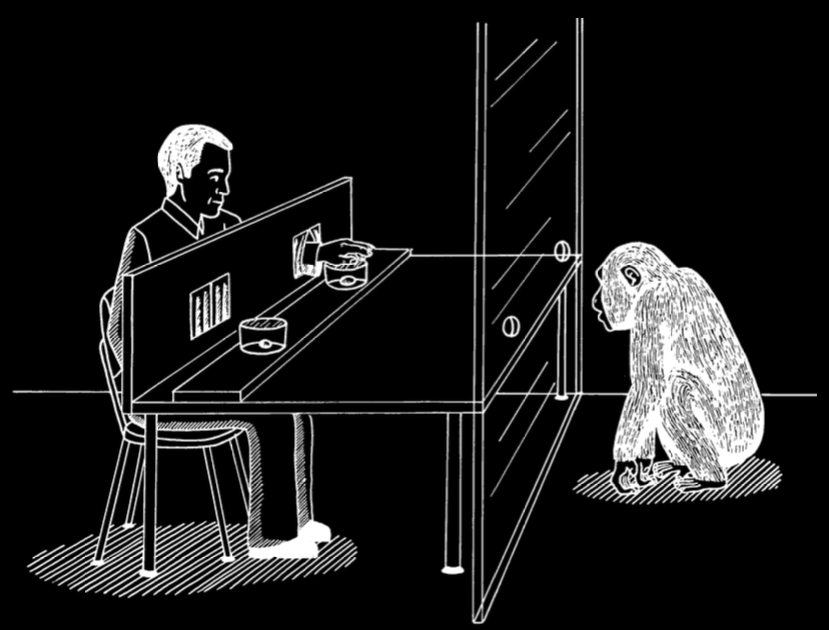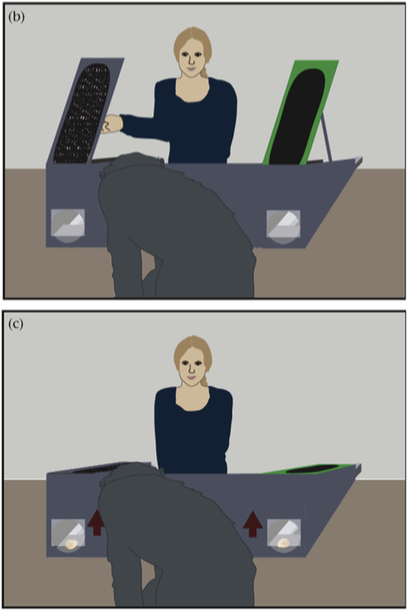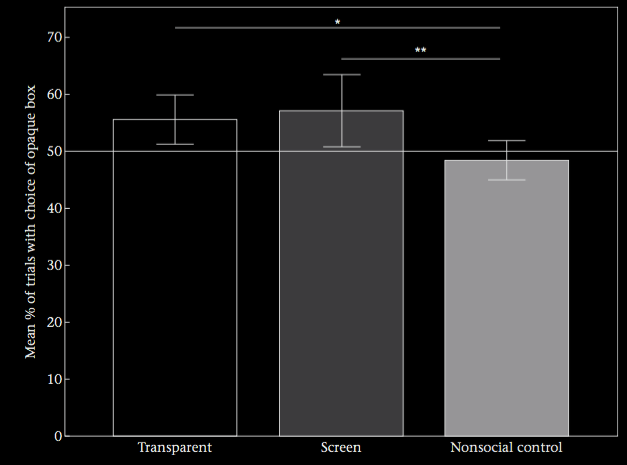Click here and press the right key for the next slide (or swipe left)
also ...
Press the left key to go backwards (or swipe right)
Press n to toggle whether notes are shown (or add '?notes' to the url before the #)
Press m or double tap to slide thumbnails (menu)
Press ? at any time to show the keyboard shortcuts
Nonhuman Mindreading: The Logical Problem
The logical problem
‘since mental state attribution in [nonhuman] animals will (if extant) be based on observable features of other agents’ behaviors and environment ... every mindreading hypothesis has ... a complementary behavior-reading hypothesis.
‘Such a hypothesis proposes that the animal relies upon certain behavioral/environmental cues to predict another agent’s behavior
Lurz (2011, 26)



1. Ascriptions of mental states ultimately depend on information about behaviours
- information triggering ascription
- predictions derived from ascription
2. In principle, anything you can predict by ascribing a mental state you could have predicted just by tracking behaviours.
Is there an experimental solution to the ‘Logical Problem’?
Lurz and Karchun (2011) : yes ...
‘Behavior-reading animals can appeal only to ... reality-based, mind-independent facts, such as facts about agents’ past behavior or their current line of gaze to objects in the environment.
‘Mindreading animals, in contrast, can appeal to the subjective ways environmental objects perceptually appear to agents to predict their behavior.’
Lurz and Krachun (2011, p. 469)

Lurz & Krachun 2011, figure 1
The logical problem
1. Ascriptions of mental states ultimately depend on information about behaviours and objects
- information triggering ascription
- predictions derived from ascription
- ways objects appear
2. In principle, anything you can predict by ascribing a mental state you could have predicted just by tracking behaviours.
‘Behavior-reading animals can appeal only to ... reality-based, mind-independent facts, such as facts about agents’ past behavior or their current line of gaze to objects in the environment.
‘Mindreading animals, in contrast, can appeal to the subjective ways environmental objects perceptually appear to agents to predict their behavior.’
Lurz and Krachun (2011, p. 469)
But: objects have appearance properties, and provide affordances, which are independent of any particular mind.
Do goggles solve the ‘Logical Problem’?
‘“self-informed” belief induction variables [... are those] that, if the participant is capable of mentalizing, he or she knows only through extrapolation from her own experience to be indicative of what an agent can or cannot see and, therefore, does or does not believe’
Heyes, 2014 p. 139

Karg et al, 2015 figure 4 (Experiment 2)

Karg et al, 2015 figure 5 (Experiment 2)

Karg et al, 2015 figure 5 (Experiment 2)
Do goggles solve the ‘Logical Problem’?
‘“self-informed” belief induction variables [... are those] that, if the participant is capable of mentalizing, he or she knows only through extrapolation from her own experience to be indicative of what an agent can or cannot see and, therefore, does or does not believe’
Heyes, 2014 p. 139